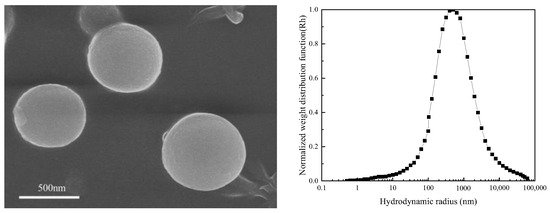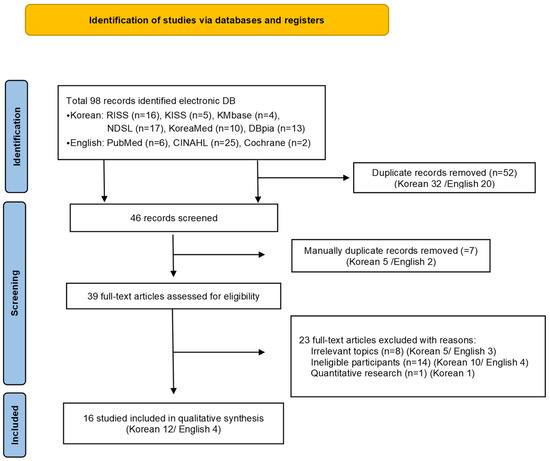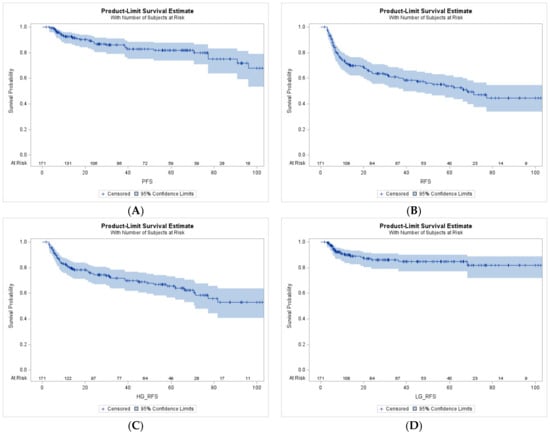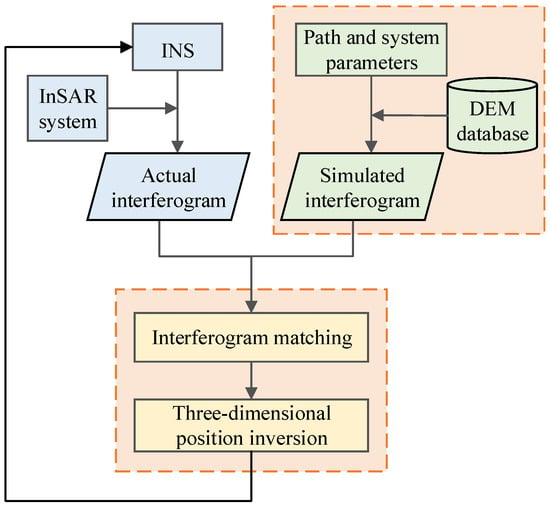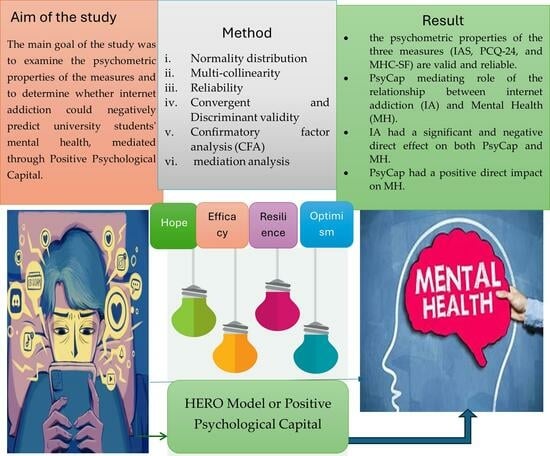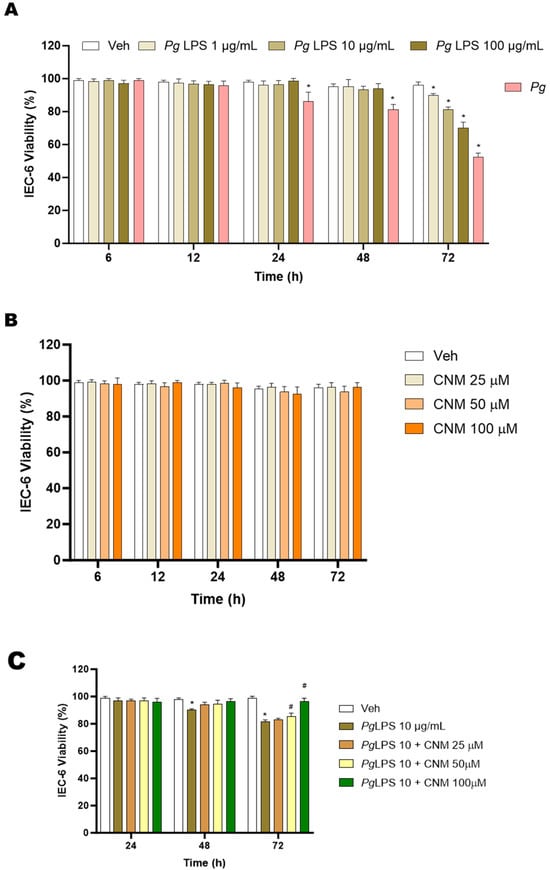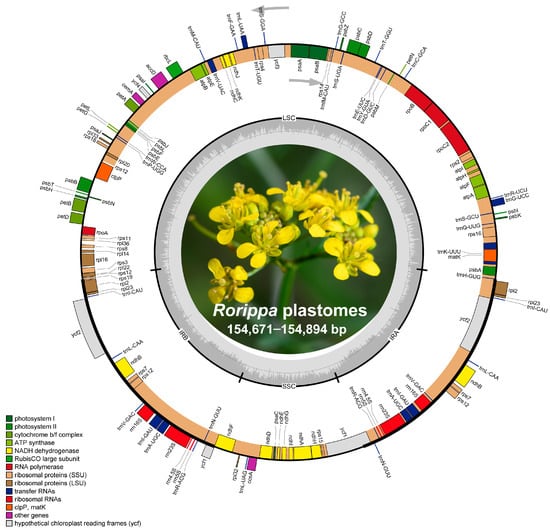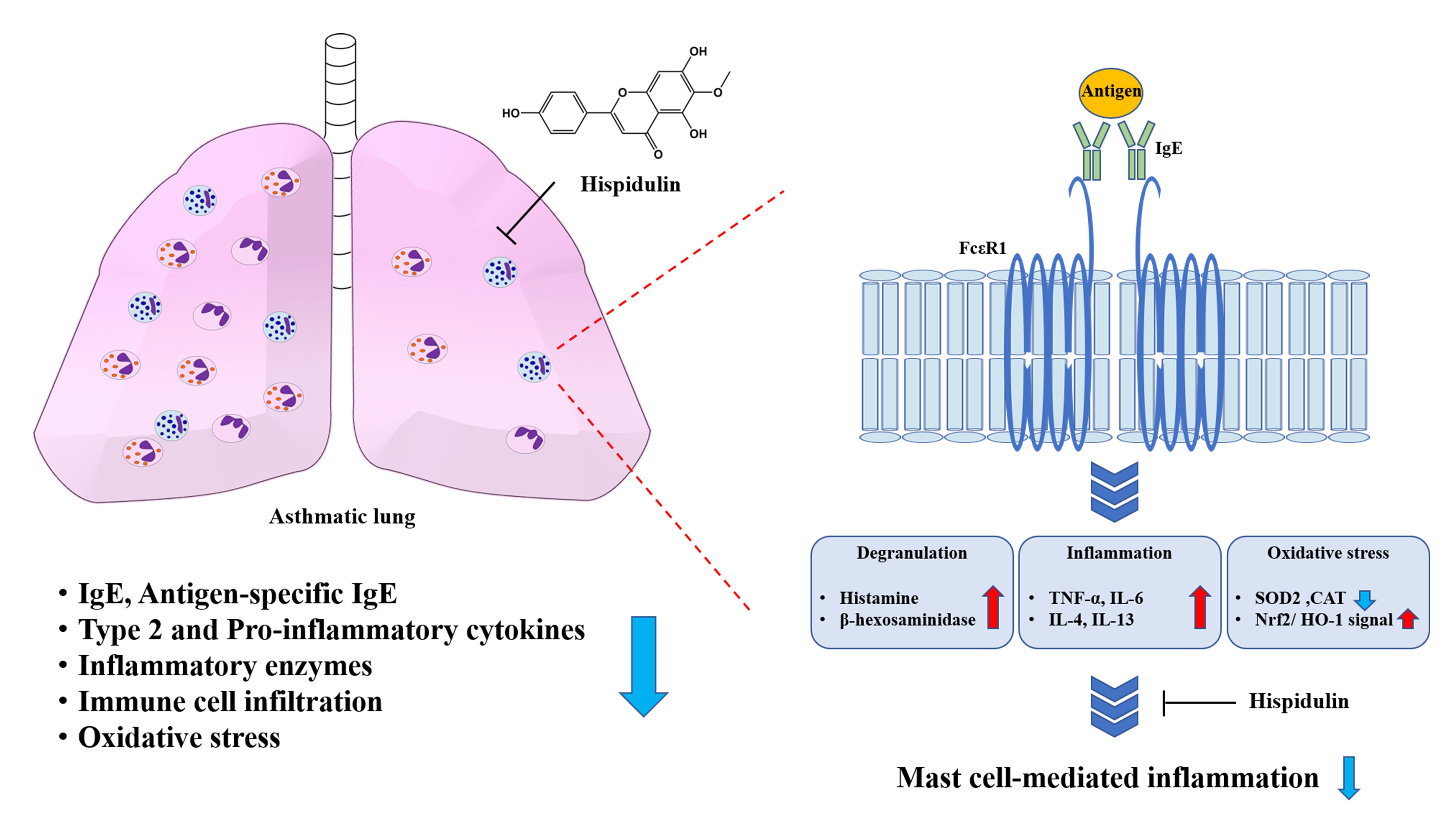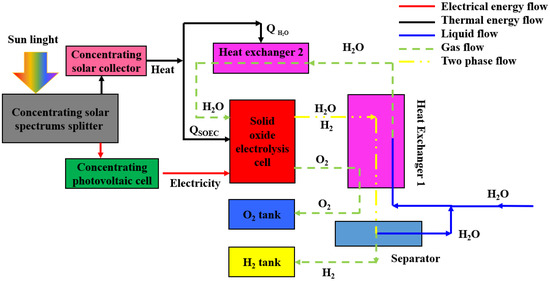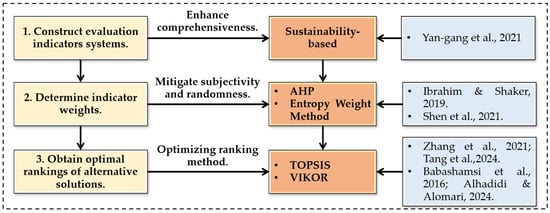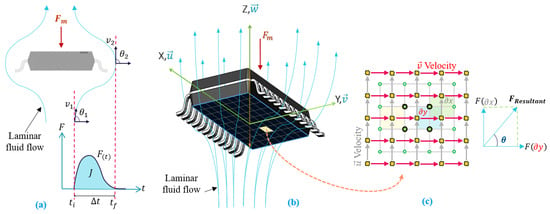The genus
Rorippa belongs to the family Brassicaceae, and its members usually have high medicinal value. The genus consists of approximately 75 species and mainly grows in the Northern Hemisphere, occurring in every continent except Antarctica. The taxonomy and phylogenetic relationships of
Rorippa are still unsettled, largely due to complex morphological variations in
Rorippa, which were caused by frequent hybridization events. Here, we sequenced four complete plastid genomes of
Rorippa species by Illumina paired-end sequencing. The four new plastid genomes of
Rorippa ranged in total size from 154,671 bp for
R. palustris to 154,894 bp for
R. sylvestris. There are 130 genes in the four plastomes, embodying 8 rRNA, 37 tRNA, and 85 protein-coding genes. Combining with six published plastid genomes, we carried on comparative and phylogenetic analyses. We found that the ten
Rorippa plastid genomes were conservative in gene number and order, total size, genomic structure, codon usage, long repeat sequence, and SSR. Fourteen mutational hotspot regions could be selected as candidate DNA barcoding to distinguish
Rorippa plants. The phylogenetic trees clearly identified that ten
Rorippa species displayed monophyletic relationships within the tribe Cardamineae based on plastomes and nrDNA ITS sequences. However, there are significant cytonuclear discordances in the interspecific relationships within
Rorippa, as well as the intergeneric relationships between
Rorippa and its related genera. We inferred that the cytonuclear discordance is most likely a result of interspecific hybridization within
Rorippa, as well as intergeneric hybridization with its related genera. These plastid genomes can offer precious information for studies of species authentication, evolutionary history, and the phylogeny of
Rorippa.
Full article
 IJMS
IMPACT
IJMS
IMPACT Applied Sciences
IMPACT
Applied Sciences
IMPACT Sustainability
IMPACT
Sustainability
IMPACT Sensors
IMPACT
Sensors
IMPACT JCM
IMPACT
JCM
IMPACT Energies
IMPACT
Energies
IMPACT Molecules
IMPACT
Molecules
IMPACT Materials
IMPACT
Materials
IMPACT Remote Sensing
IMPACT
Remote Sensing
IMPACT Cancers
IMPACT
Cancers
IMPACT Electronics
IMPACT
Electronics
IMPACT Mathematics
IMPACT
Mathematics
IMPACT Foods
IMPACT
Foods
IMPACT Buildings
IMPACT
Buildings
IMPACT Plants
IMPACT
Plants
IMPACT Nutrients
IMPACT
Nutrients
IMPACT Animals
IMPACT
Animals
IMPACT Polymers
IMPACT
Polymers
IMPACT Water
IMPACT
Water
IMPACT Diagnostics
IMPACT
Diagnostics
IMPACT Biomedicines
IMPACT
Biomedicines
IMPACT Agronomy
IMPACT
Agronomy
IMPACT Microorganisms
IMPACT
Microorganisms
IMPACT Processes
IMPACT
Processes
IMPACT Healthcare
IMPACT
Healthcare
IMPACT Forests
IMPACT
Forests
IMPACT Cells
IMPACT
Cells
IMPACT JMSE
IMPACT
JMSE
IMPACT Medicina
IMPACT
Medicina
IMPACT Viruses
IMPACT
Viruses
IMPACT Agriculture
IMPACT
Agriculture
IMPACT Nanomaterials
IMPACT
Nanomaterials
IMPACT IJERPH
IJERPH
 Land
IMPACT
Land
IMPACT Pharmaceutics
IMPACT
Pharmaceutics
IMPACT Pharmaceuticals
IMPACT
Pharmaceuticals
IMPACT Religions
IMPACT
Religions
IMPACT Biomolecules
IMPACT
Biomolecules
IMPACT Life
IMPACT
Life
IMPACT Micromachines
IMPACT
Micromachines
IMPACT Atmosphere
IMPACT
Atmosphere
IMPACT Antioxidants
IMPACT
Antioxidants
IMPACT Genes
IMPACT
Genes
IMPACT Metals
IMPACT
Metals
IMPACT Symmetry
IMPACT
Symmetry
IMPACT Children
IMPACT
Children
IMPACT Coatings
IMPACT
Coatings
IMPACT Vaccines
IMPACT
Vaccines
IMPACT Horticulturae
IMPACT
Horticulturae
IMPACT Education Sciences
IMPACT
Education Sciences
IMPACT Minerals
IMPACT
Minerals
IMPACT Brain Sciences
IMPACT
Brain Sciences
IMPACT JPM
IMPACT
JPM
IMPACT Bioengineering
IMPACT
Bioengineering
IMPACT




